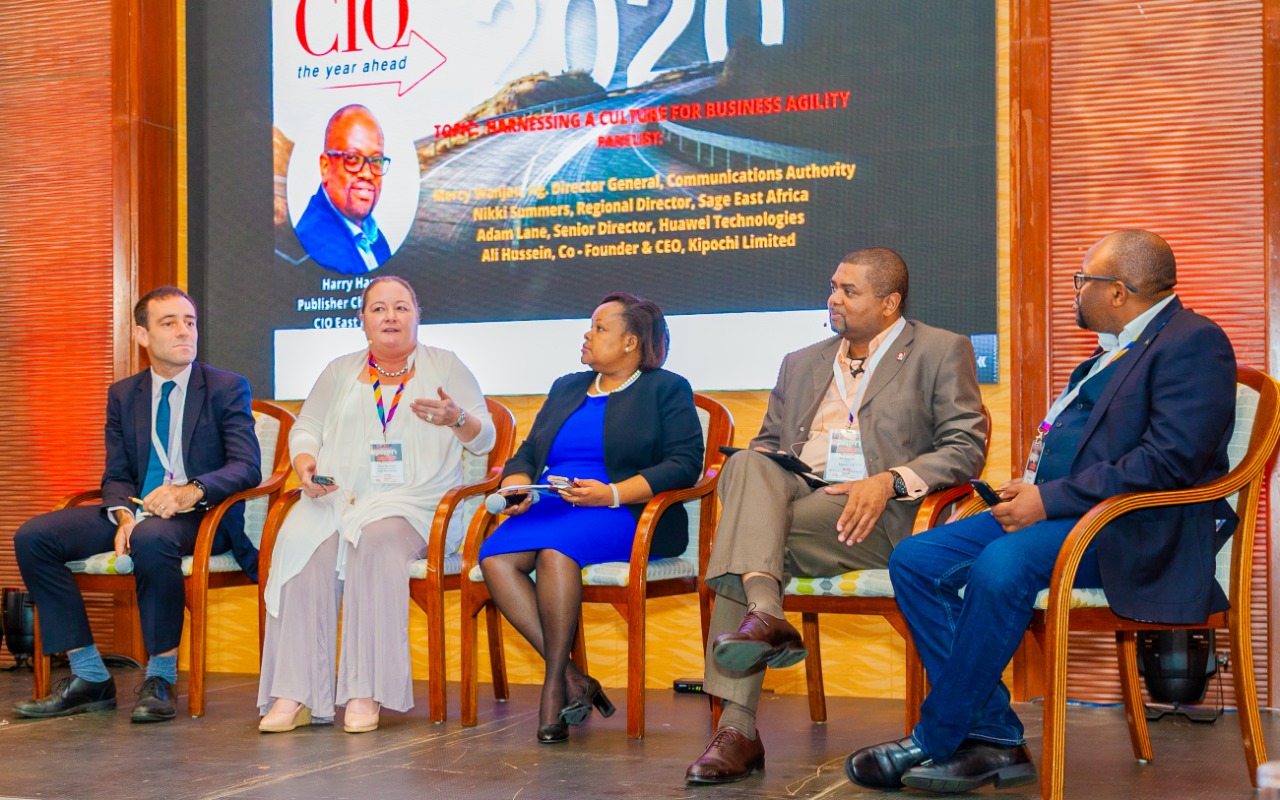advertisement
Huawei predicts digital trends to transform industrialization globally
With an expanding tech footprint in Africa, Huawei Technologies has continued to distill insights pruposed to accelerate digital transformation following…

With an expanding tech footprint in Africa, Huawei Technologies has continued to distill insights pruposed to accelerate digital transformation following its deliberate choice to work with top global businesses around the world as depicted with its recent research to identify 10 tech trends dubbed: Global Industry Vision (GIV) which it predicts several enterprises will adopt before 2025.
In a presentation during The Year Ahead Forum 2020 organized by CIO East Africa in Nairobi, Kenya; Adam Lane, Senior Director, Huawei Technologies predicted how tech trends will disrupt businesses within the year by pointing out how Huawei’s annual Global Industry Vision (GIV) 2025 has analyzed tech trends to shape the future of enterprises and transform lives.
At the forum themed: Turning Accelerated Disruption into Opportunities, Lane pointed out that technology C-Suites at the immersive forum have the chance to start harnessing in earnest the power of disruptive technologies in order to better shape their business experience and indeed the customer experience.
advertisement
Huawei is using AI and 5G technology to build a system which completely eliminate the need for physical input when using electronic devices. He noted that search experience of the future will be seamless, smooth and precise.
Adam Lane, Senior Director, Huawei Technologies
Following the consideration that intelligent information and communications technology (ICT) is advancing at a flashing speed, Lane observed that finding new application in virtually every decision people make has gained foothold in workplace, hence the need of making some deliberate advancements in digital transformation in different industries across the globe.
Among the technologies Lane pointed out will have a major shake-up in the next five year range from: –
Living with Bots
advertisement
While referring to the GIV predictions, Lane averred that living with Bots: a new bionic that enable those with physical disabilities to live better lives; will gain momentum since these bots are getting more capable and more affordable and may be a major market opportunity. According to the Huawei, by 2025, an average of 14 percent of home will have domestic robots.
While peering into the future, one would wonder who would want to get things moving faster, yielding better results and be safer at workplace. Owing to the speedily changing work environment, demand for bionic tech is unsurprisingly on the rise, said Lane noting that there will be a steady adoption of this technology in 2020.
Among the examples here is exoskeletons, a wearable mobile machine that are powered by a system of electric motors, pneumatics, levers, hydraulics or a combination of technologies that allow for limb movement with increased strength and endurance. Its design aims to provide back support, sense the user’s motion, and send a signal to motors which manage the gears. The exoskeleton supports the shoulder, waist and thigh, and assists movement for lifting and holding heavy items, while lowering back stress. Smart exoskeletons are already available and demand is set to increase Lane said.
advertisement
Robots are here to stay
Lane asserted robots time had come and they are here to stay. Given the bots potential benefits: “That’s a good thing,” he quipped adding: that advances in materials science, perceptual AI, and network tech like 5G, cloud, and IoT are making it increasingly likely that a robot will be making lives better by 2025.
Super Sight
Among the technologies Lane pointed out are lined to dramatically transform the workplaces are the super sights. He noted that using AR in workplaces to help workers be more precise and more efficient whilst monitoring quality, using drones to help monitor equipment and installations for signs of maintenance, and using AR/VR in tourism to bring history to life will steadily be adopted and become a commonality.
Zero Search
According to Lane, Huawei is using AI and 5G technology to build a system which completely eliminate the need for physical input when using electronic devices. He noted that search experience of the future will be seamless, smooth, and precise. Smart, AI-infused systems will create “Me Networks” of friends, interactions, and social experiences.
Finding information will become increasingly button-free, as appliances and devices begin talking to us and anticipating our needs. And in industry, locating faults and the maintenance process will reach unprecedented levels of ease, speed, and cost-efficiency. In this regard, big data shall proactively warn you when you need to do something, from preventative maintenance to customer service.
In reference to Huawei GIV which looks at how the fusion of emerging technologies will propel productivity and opportunities to new levels in 17 industries, including transport, retail, finance, manufacturing, and aerospace, Lane projected an increased and processioned leap for Africa on areas that include: –
Tailored Streets: new traffic management systems will improve traffic efficiency, improve public transport, and enable rapid emergency response.
Working with Bots: robots will take over heavy lifting and precision tasks in factories as well as dealing with dangerous tasks like fire-fighting.
Augmented Creativity: AI that is accessible on the cloud to even small businesses will lead to new ways of doing R&D in healthcare and enable innovation in the creative industries.
Frictionless Communication: always connected workers and customers will bring more efficiencies and better customer service as well opportunities for new service-based products and help overcome language barriers.
Symbiotic Economy: technology is enabling new solutions to improve environmental sustainability and social inclusion from protecting wildlife and forests to empowering the visually impaired.
5G’s Rapid Rollout: 5G is bringing high speed connectivity without the cost or delays of laying fiber, and with it new models for gaming and providing remote medical care.
Global Digital Governance: data and privacy must be protected and new forms of control, ownership and pricing of data will develop.